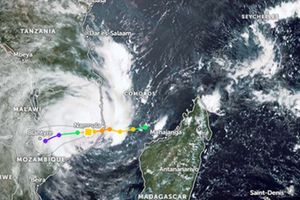New rice sorting technology to boost quality, productivity

Satake International Strategy Office Manager Mr Nagai Koji explains to Ms Anna Mawangamilo from the Ministry of Agriculture how the rice sorting machine- Colour Sorter-works. Colour Sorter was launched in Dar es Salaam yesterday. PHOTO | SAID KHAMIS
What you need to know:
- The Colour Sorter machines have the ability to sort out unwanted solid materials using higher-resolution sensors, leaving the rice grains clear and of high quality
Dar es Salaam. Rice processing in the country has received a boost following the introduction of a new processing technology known as Colour Sorter.
The Colour Sorter machines have the ability to sort out unwanted solid materials using higher-resolution sensors, leaving the rice grains clear and of high quality.
The technology is an initiative of a Japanese company called Satake, which has entered into an agreement with local processors for supply and maintenance. Processors say they are optimistic that the rice sorting technology will open more export markets to Tanzania-produced rice, whose quality has been the stumbling block.
“We once organised ourselves and started exporting rice to Dubai. Unfortunately, we did not last long. Our rice consignments were rejected as they were deemed substandard,” said a rice processor who identified himself as Mr Juma.
The Director of Mechanization and Irrigation in the Ministry of Agriculture, Ms Anna Mwangamilo, encouraged farmers to grow more rice to help the government achieve the 2019–2030 National Rice Development Strategy (NRDS) phase II.
“The aims of NRDS are to sustain rice self-sufficiency, contribute to regional self-sufficiency, be a rice market leader, and be well positioned to become competitive through improvement of quality, quantity, and value of the produced rice,” she said yesterday. In recent years, rice yield has risen, but quality has remained a challenge. The main goal of NRDS II is to make Tanzania sufficient and a major exporter of rice to the East Africa Community (EAC) and the Middle East.
According to Mwangamilo, the new technology will greatly boost rice export market share, quality, and production. The government anticipates that the technology will increase the rice industry’s competitiveness in both domestic and international markets.
Mr Indrabhuwan Singh, CEO-Group Operations at Mohammed Enterprises Tanzania Limited (MeTL), said that Africa and Tanzania in general have the potential to feed the world in the next two decades if a strong agricultural value chain is created.
“The country has a lot of potential because its strategies and projects are implemented accordingly. Thus, we need to use technology, be efficient and accurate to boost productivity and quality for local and foreign markets,” he said.
Mr Singh noted that by 2050 the global population is going to reach 9 billion therefore there is a need for transformation of technology in cultivation.
It is believed that griculture connectivity by using modern technology would contribute and unlock more than $500 billion to the global Gross Domestic Product (GDP) by 2030.




